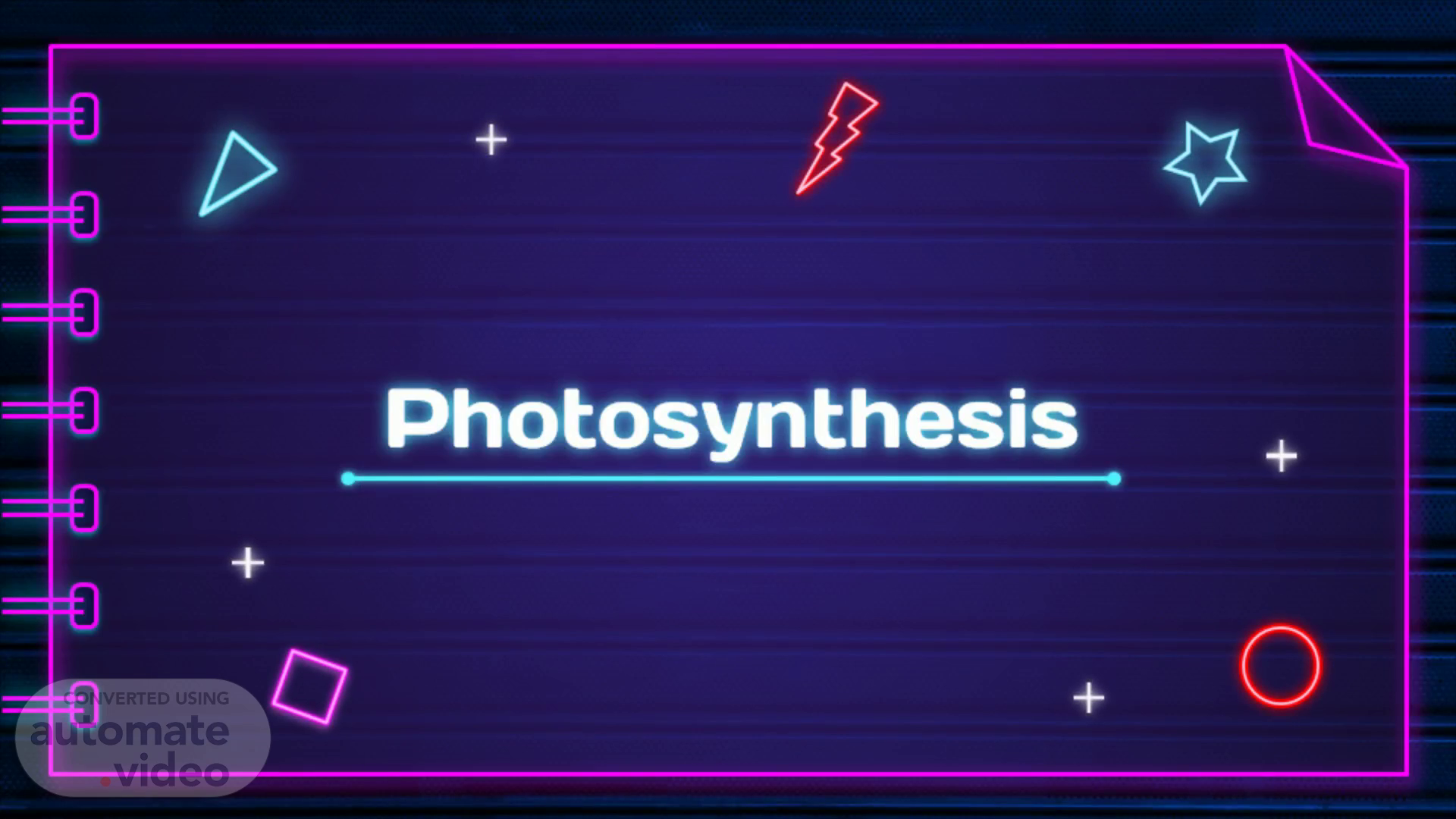Scene 1 (0s)
Photosynthesis.
Scene 2 (7s)
‘ Photo' is a Greek word for Light 'Synthesis' is a Greek word for 'Putting together'..
Scene 3 (17s)
Equation for Photosynthesis. Photosynthesis + 61-420 carbon dioxide + water CH o + 602 6 12 6 glucose + oxygen.
Scene 4 (26s)
Experiments show that there are two main stages in photosynthesis: the light-dependent stage the light-independent stage.
Scene 5 (37s)
T he light-dependent stage. Requires Light. 01.
Scene 6 (46s)
The light-dependent stage. Chloroplasts are organelles seen in green plants cells. They contain the green pigment chlorophyll which ‘traps’ the light energy from the Sun. The energy is used to ‘split’ water (H 2 O) into hydrogen and oxygen. The oxygen is a waste product and diffuses out of the leaf..
Scene 7 (1m 4s)
Light-independent stage. Takes place whether or not light is present..
Scene 8 (1m 14s)
The hydrogen then combines with carbon dioxide (CO 2 ) to make glucose (C 6 H 12 O 6 ). This stage of photosynthesis does not need light and can happen when it is dark. The organ specialised for photosynthesis is the leaf. The crosswise section of a leaf reveals many cells, arranged in a manner that is ideally suited for photosynthesis..
Scene 9 (1m 34s)
Light-dependent and light-independent stages of photosynthesis.
Scene 10 (1m 42s)
Adaptations of the leaf for photosynthesis. The leaves of green plants are where photosynthesis takes place. The lamina, a flat section of the leaf consisting of numerous layers of cells, is found on all leaves. The mesophyll cells of the leaf blade are responsible for photosynthesis. The petiole connects the lamina to the plant stem. The vascular tissue, which consists of xylem vessels, phloem sieve tubes, and companion cells, extends through the petiole and throughout the lamina in the midrib and veins, so that all mesophyll cells are in close proximity to the vascular tissue. In order to carry out photosynthesis as efficiently as possible, the leaf structure is adapted both externally and internally..
Scene 11 (2m 13s)
External Features of a leaf.
Scene 12 (2m 20s)
The lower surface of a leaf, showing the closely-fitting cells of the epidermis; the oval holes are stomata.
Scene 13 (2m 31s)
Water H 2 O. Water is a condition needed for photosynthesis as well as a factor that affects photosynthesis. Water is a factor that affects photosynthesis, where if there is not enough water photosynthesis will slow down. H 2 0 limits the rate during the dry season in tropical climates and when the ground is frozen in temperate climates. It is absorbed from the soil by the roots..
Scene 14 (2m 49s)
Carbon Dioxide CO 2. Carbon Dioxide is a condition needed for photosynthesis as well as a factor that affects photosynthesis. CO 2 is a factor that affects photosynthesis, the more carbon dioxide, the quicker photosynthesis happens. It diffuses into the leaf from the air through the stomata..
Scene 15 (3m 5s)
Sunlight. Sunlight is a condition needed for photosynthesis. It is absorbed by the chlorophyll in chloroplasts..
Scene 16 (3m 14s)
Chlorophyll. Chlorophyll i s a condition needed for photosynthesis. It is the green pigment that is present in chloroplasts..
Scene 17 (3m 23s)
Temperature. Temperature is a factor that affects the rate of photosynthesis. When light increases temperature also increases, at low temperatures, photosynthesis is slow, however a plant can photosynthesise faster on a warm day than a cold day..
Scene 18 (3m 36s)
Temperature. Temperature is a factor that affects the rate of photosynthesis. When light increases temperature also increases, at low temperatures, photosynthesis is slow, however a plant can photosynthesise faster on a warm day than a cold day..
Scene 19 (3m 42s)
Light Intensity. Light Intensity is a factor that affects the rate of photosynthesis. Between night and day the amount of light varies. Also the position of the sun and if the sun comes out or not. In the dark plants cannot photosynthesise, where there is little light photosynthesis takes place slowly, and where there is lots of light the rate of photosynthesis will increase..
Scene 20 (4m 1s)
THANK YOU. KATHYANN CEDENO.
